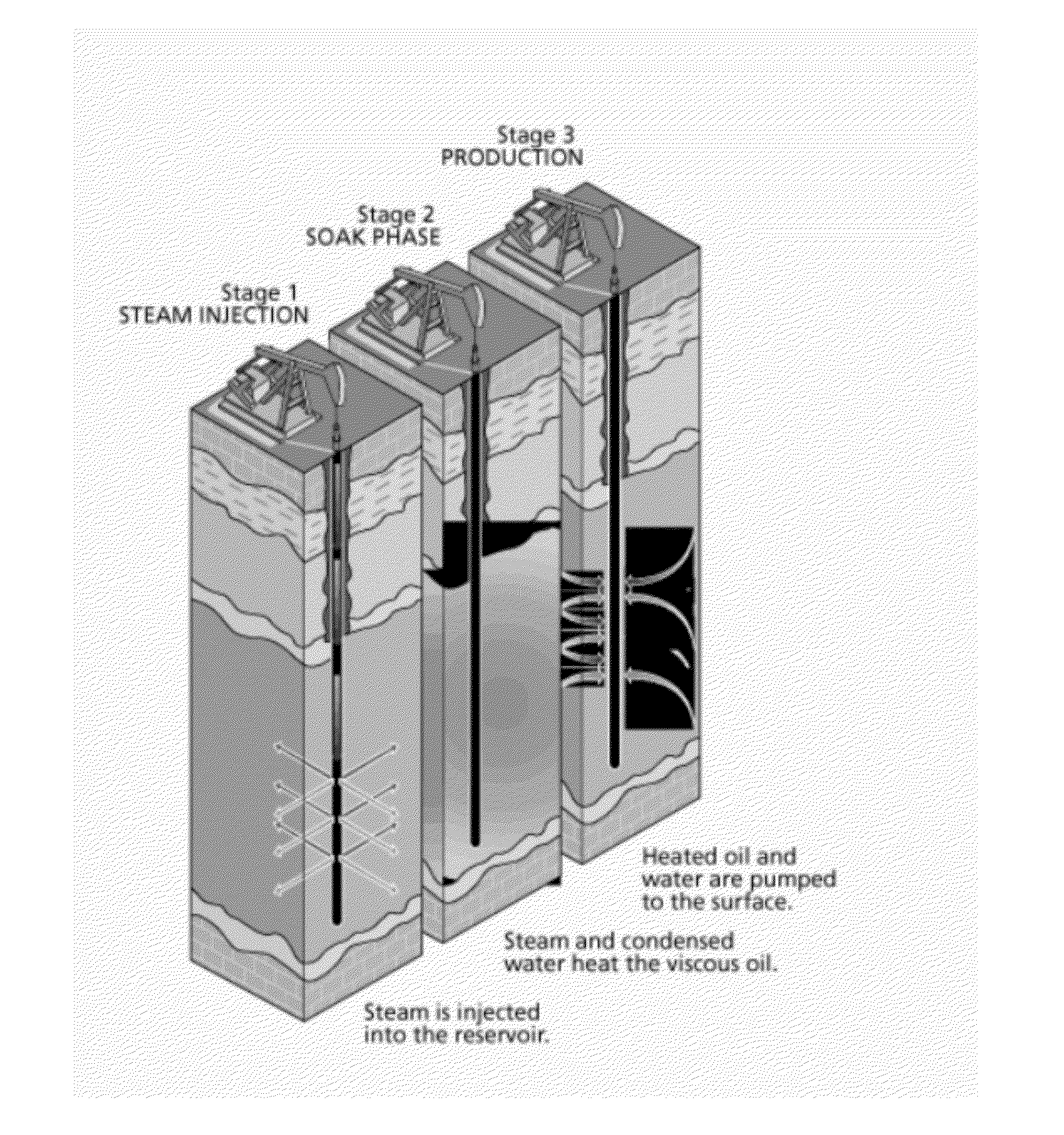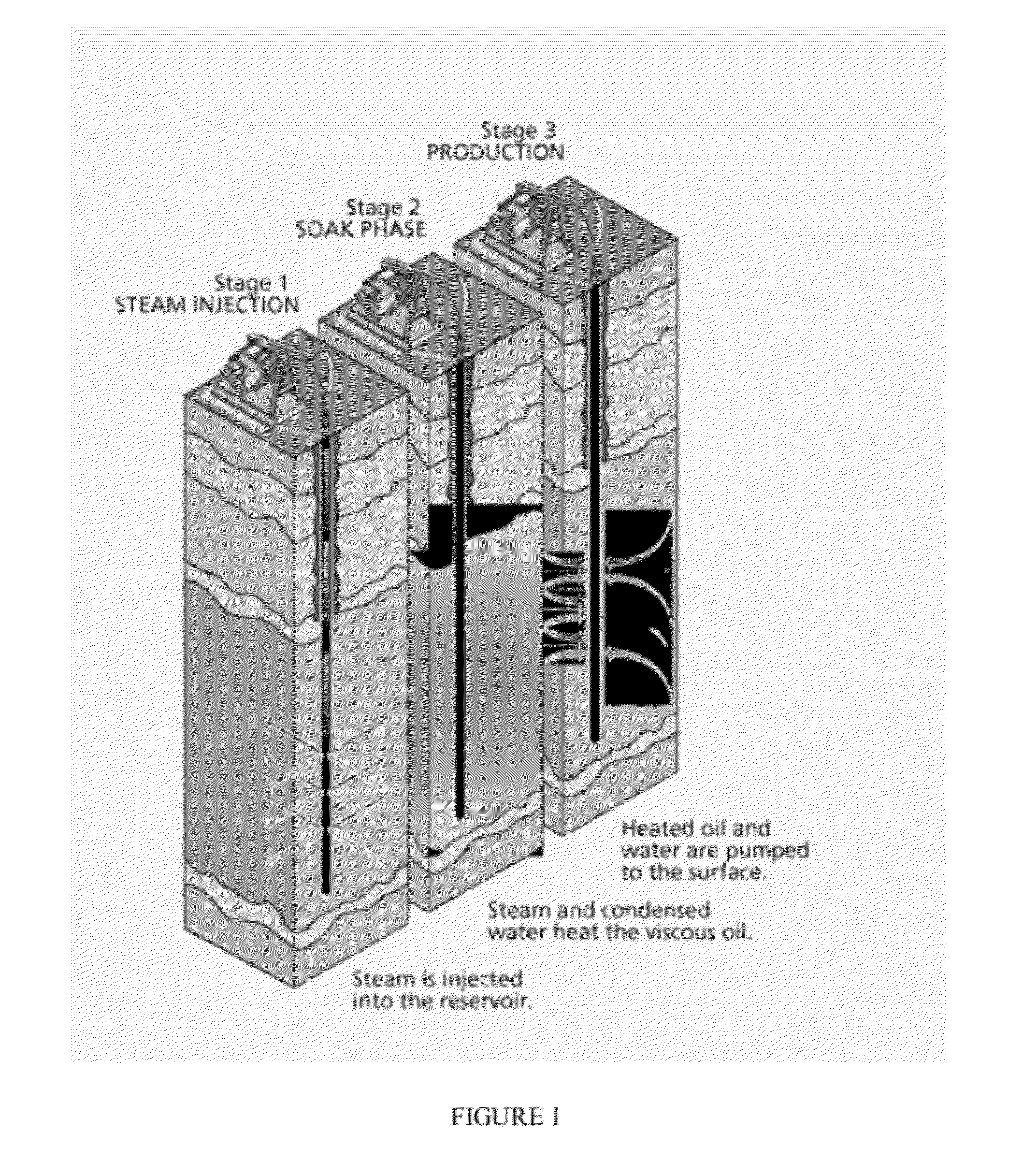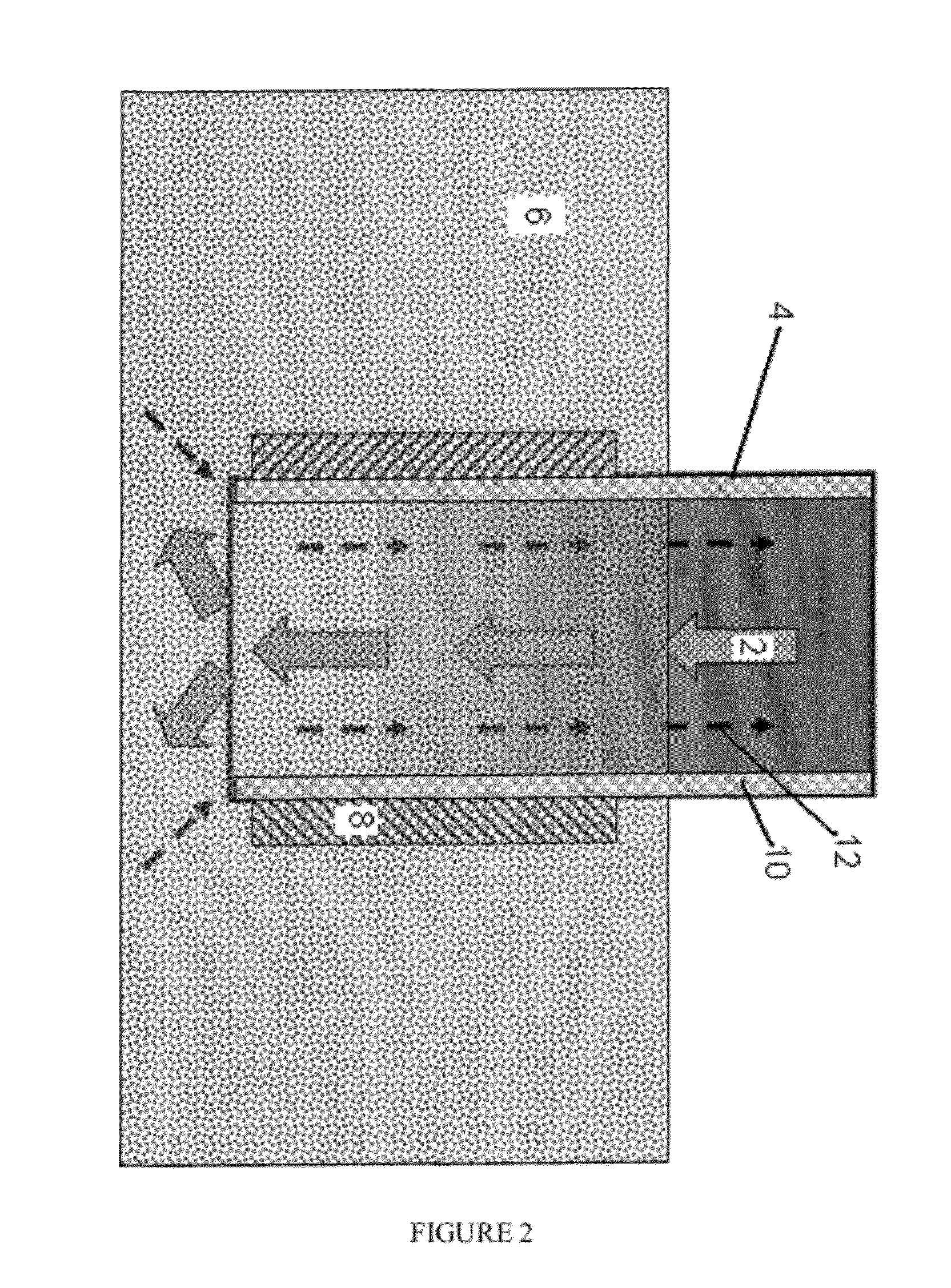Cyclic steam stimulation using RF
a technology of cyclic steam and rf, which is applied in the direction of fluid removal, borehole/well accessories, insulation, etc., can solve the problems of only being able to recover approximately 20% of the original oil in place, difficult to produce, and difficult to produce, so as to achieve sufficient heating level, reduce water consumption, and improve efficiency
- Summary
- Abstract
- Description
- Claims
- Application Information
AI Technical Summary
Benefits of technology
Problems solved by technology
Method used
Image
Examples
example 1
Catalyst as Liner of Well
[0048]FIG. 2 describes an embodiment of cyclic steam stimulation, wherein a catalyst is placed as a liner alongside the well. In this embodiment steam 2 is injected into a well 4. The steam 2 heats the bitumen 6 in the formation. When the required temperature is achieved the injection of steam 2 into the well 4 is ceased. The bitumen 6 is soaked with the steam2 for a period of time. MW and / or RF radiation is then directed into the well from a MW / RF antenna 8. Here the MW / RF antenna 8 is configured to surround the bottom of the well 4 so as to reheat the injected steam before the steam exits the well. The antenna can also be gusseted within the well.
[0049]In this embodiment the catalyst 10 is placed as a liner alongside the well 4. The MW and / or RF radiation is capable of heating the steam 2 into superheated steam and revaporized steam, which has a higher temperature than that of the initially injected steam. The bitumen 6 is then further heated with this sup...
example 2
Catalyst in the Hydrocarbon Formation
[0050]FIG. 3 describes an embodiment of cyclic steam stimulation, wherein a catalyst is placed as particles in the hydrocarbon formation. In this embodiment steam 2 is injected into a well 4. The steam 2 heats the bitumen 6 in the formation. When the required temperature is achieved the injection of steam 2 into the well 4 is ceased. The bitumen 6 is soaked with the steam 2 for a period of time. MW and / or RF radiation is then directed into the well 4 from a MW / RF antenna 8. In this embodiment the catalyst 10 are dispersed throughout the formation. The MW and / or RF radiation is capable of heating the steam 2 into superheated steam and revaporized steam, which has a higher temperature than of the original steam. The bitumen 6 is then further heated with this superheated steam and can undergo upgrading reactions. The upgraded hydrocarbons 12 are then produced from the well 4.
example 3
Comparison of RF Reheating
[0051]FIG. 3 shows simulated results of cumulative oil SC production over time, between the a well produced with radio frequency reheating and one without the reheating. From the figure it is clearly shown that with radio frequency reheating the cumulative oil produced is much higher than that without the reheating. In fact, the well that employs radio frequency reheating can have 2,000 m3 more oil. The initial phase before reaching maximum production is also much shorter with the radio frequency reheating.
PUM
 Login to View More
Login to View More Abstract
Description
Claims
Application Information
 Login to View More
Login to View More - R&D
- Intellectual Property
- Life Sciences
- Materials
- Tech Scout
- Unparalleled Data Quality
- Higher Quality Content
- 60% Fewer Hallucinations
Browse by: Latest US Patents, China's latest patents, Technical Efficacy Thesaurus, Application Domain, Technology Topic, Popular Technical Reports.
© 2025 PatSnap. All rights reserved.Legal|Privacy policy|Modern Slavery Act Transparency Statement|Sitemap|About US| Contact US: help@patsnap.com



